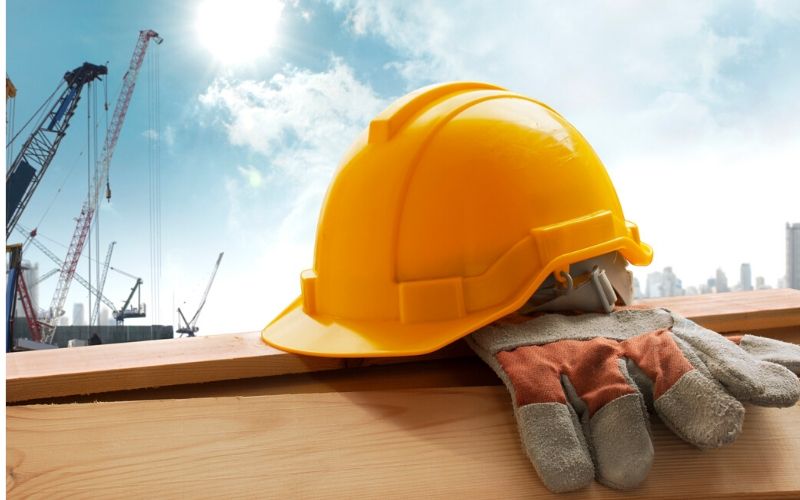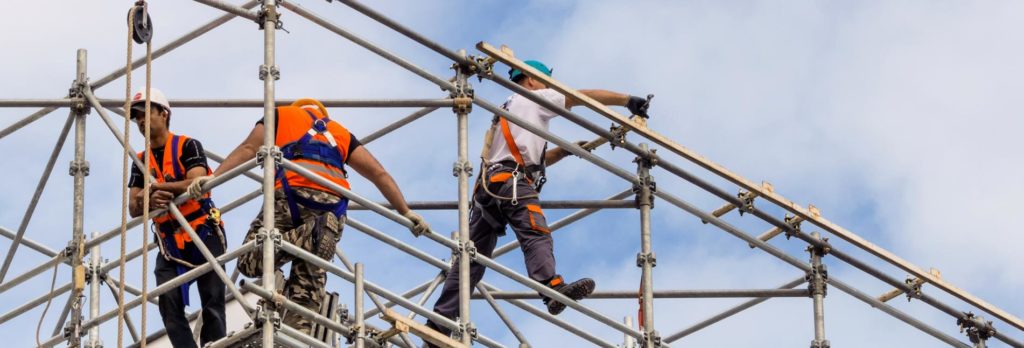When designed and installed correctly, scaffolding provides a secure stable work platform and is a safe form of access for people working at heights. However, if installed improperly by non-qualified and inexperienced scaffolders, scaffolding can be very dangerous indeed. The dangers of scaffolding are often ignored or overlooked because of how frequently it is used, because of how normal scaffold has become on construction sites, and because of how comfortable people feel when working on a stable platform. Here we look at the biggest risks involved in using scaffolding, and how to prevent accidents from happening in the first place by correcting common faults before they become a risk.
How to Avoid Scaffolding Accidents
A recent study showed that 72 percent of workers injured in scaffold accidents attributed the accident either to structural malfunction (the planking or support giving way), or to the employee slipping or someone being struck by a falling object. Sadly, many accidents involving scaffolds are preventable but often due to budget or deadline pressures, sometimes construction companies fail to put the proper mechanisms in place to prevent accidents.
While some incidents are unavoidable, a huge percentage of accidents which happen on scaffolding can be avoided by taking basic safety steps. Protecting workers from scaffolding accidents can prevent some of the 4500 injuries which occur every year as a result of incorrectly installed scaffolding. To protect both employers and workers alike from avoidable accidents, there are some simple checks and safety measures you can carry out, as detailed below:
-
- Installation by Professional Scaffolders All scaffold design, erection and installations must be carried out by a competent team of scaffolding professionals. Once the scaffold is signed off and handed over for use, you need to make sure it stays safe, and suitable for the work.
- Check Scaffolding Regularly When scaffolding is erected properly it is often deemed ‘complete’ for the remainder of the project. But like most things in the construction industry, scaffolding needs to be inspected throughout the life of the project to ensure that it’s integrity and safety remains. Workers need to perform a visual inspection of the scaffold structure daily (before and after each work shift) and after any mishap that may have caused damage. Defective scaffolds or parts that are worn out should be discarded and replaced. Many accidents can be prevented by making sure that the scaffolds are stable and in a good condition.
- Adhere to Guidelines When we install a scaffold structure on your site, we will leave you with a set of guidelines for safe scaffold use. It is important for you and your workers adhere to the Health & Safety guidelines (including safe instructions for use and maximum load capacities). Scaffolds are designed to hold a certain weight and workers should be aware of the maximum load capacity to avoid a scaffold collapse. Using a scaffold safely as directed will help to avoid preventable accidents!
- Training is Key Your workers need to be correctly trained and be made aware of the scaffold design, proper use of the scaffold and how to perform a visual inspection. Workers should also learn how to climb on and descend the scaffolding safely, and how to properly use fall protection equipment and gear. Logging the training and keeping a record of checks made will cover you in case of accident.
- Clear Debris and Work Tidily It’s important for workers to store their tools, supplies and other equipment on scaffold in an orderly manner because the space is limited and if unkempt, causes a trip hazard. Keeping the work area free of obstruction can help prevent scaffolding accidents and eradicate unnecessary risks.
- Be Diligent Never place free-standing ladders or boxes on scaffolds because these can tip off and create a dangerous situation. Use your common sense! If scaffolds are covered in snow, ice, or other slip hazards have been spilled, do not use until it has been properly cleared up.
- Don’t Cut Corners Nothing is more important that the safety of your workers and the people who are moving around on or near your construction site. Don’t rush and don’t try to do things which may put others at risk such as jumping on or off the scaffold and trying to do things more quickly. Take the time to make the relevant checks and take the relevant safety precautions.
Staying Safe Around Scaffolding
The HSE say “Working at height is to work in any place where, if there were no precautions in place, a person could fall a distance liable to cause personal injury (for example a fall through a fragile roof)“. Companies who employ staff to “work at heights” must comply with the Work at Height Regulations 2005 (WAHR). In 2013/14 the HSE prosecuted 77 cases under WAHR 2005, there were 73 convictions with an average fine of over £8000. Using scaffolding safely is of paramount importance!
People who work on or near scaffolds should always be aware of the hazards that come with scaffold use. Signage is a necessity to protect both your workers and the general public. At any construction site an unexpected event such as a dropped item or unexpected slip can occur. If you take precautions, you can increase the safety of yourself and/or those around you. Make sure hard hats are worn always and ensure that a supervisor is made aware if scaffolding is altered or damaged in any way. Any accessories used in conjunction with scaffolds, including ropes and ladders, must be in good working order—if any equipment is damaged, it should be fixed or replaced immediately.
Regular scaffolding safety checks should be made on:
- Footings
- Standards
- Ledgers
- Bracing
- Putlogs
- Transoms
- Couplings
- Bridles
- Ties
- Boarding
- Guardrails
- Toeboards
- Ladders
Safe Scaffolding in Cornwall
We have been in the scaffolding business for many years and have become adept at installing weather-preventative measures such as temporary roofs and anti-slip wooden boards where required to keep our scaffolds safe all year long. Scaffold safety starts from the ground up. Only safe work conditions and actions will prevent unnecessary injuries when working on these structures. That, and using a scaffolding team in Cornwall who takes health and safety issues extremely seriously.
The importance of scaffolding safety can never be underestimated which is why here at 7 Bays Scaffolding we do everything within our power to ensure that the scaffolding we erect adheres to all health and safety regulations, is soundly built and as safe as can be. We offer scaffold inspection services – and Independent Statutory Scaffold inspection and site scaffolding monitoring services are available in accordance with the Work at Height Regulations 2005. Regulation 12 and Schedule 7.T he time and effort we put into training our scaffolders and developing health and safety guidelines is shown in our impeccable safety record.
For more information or for a free competitive quote just give us a call or drop us an email via our Contact Us page. We look forward to hearing from you!



